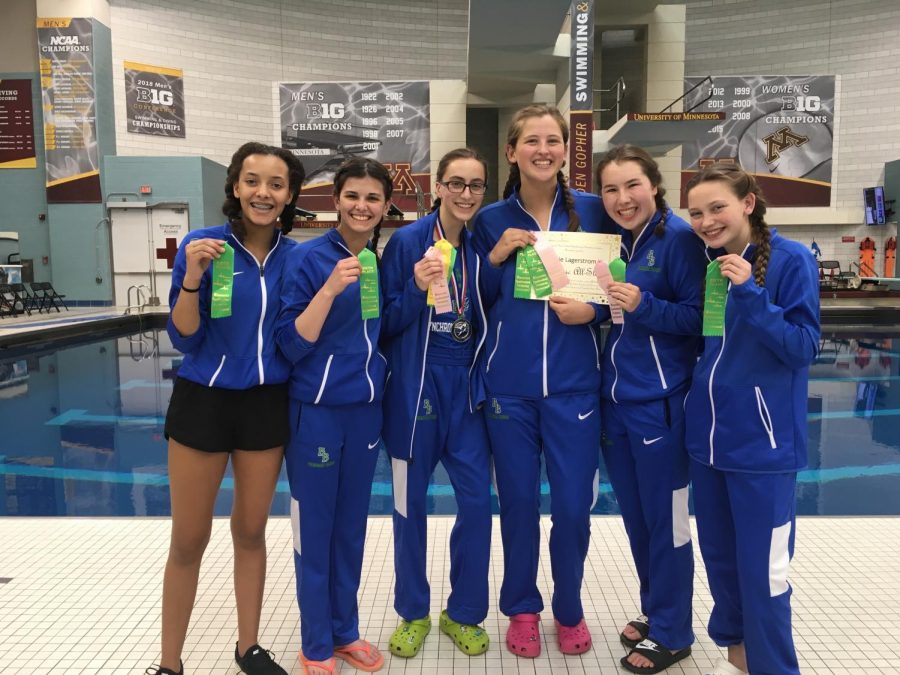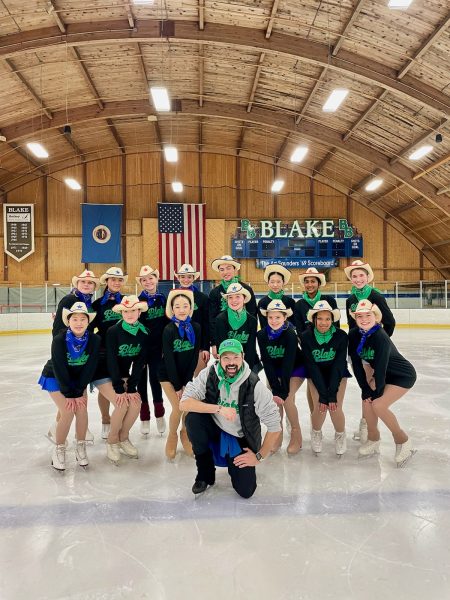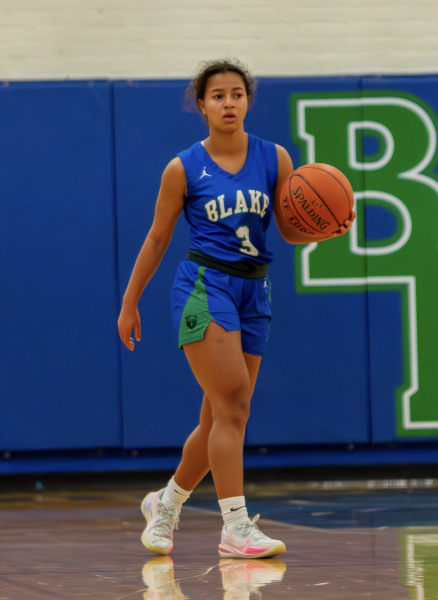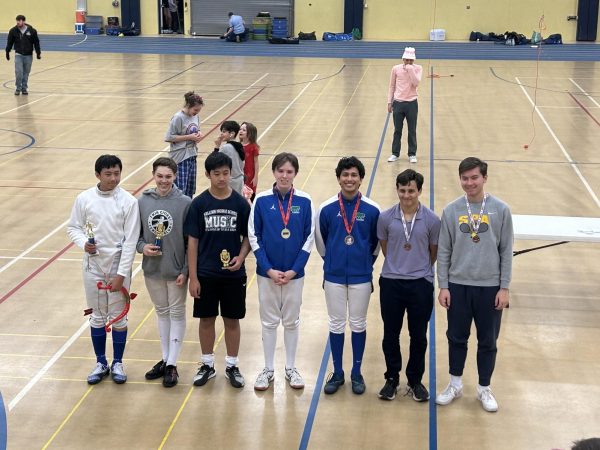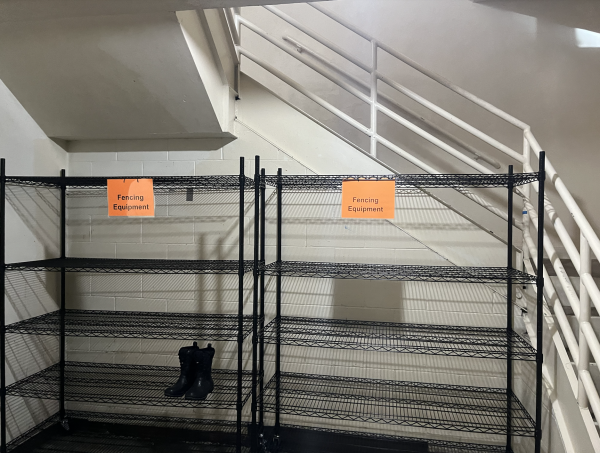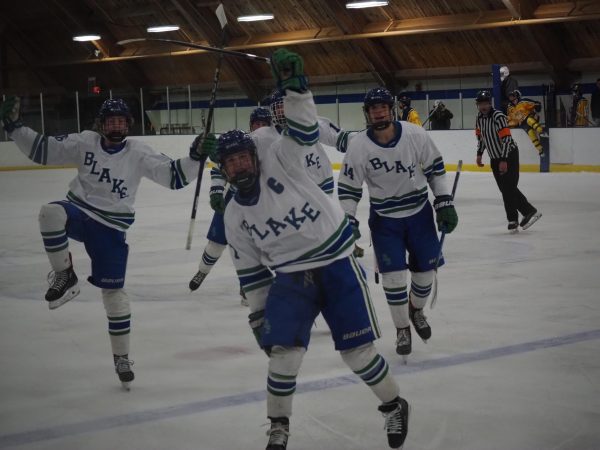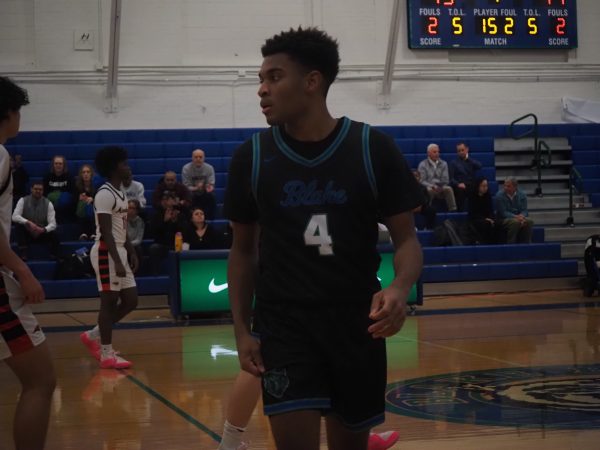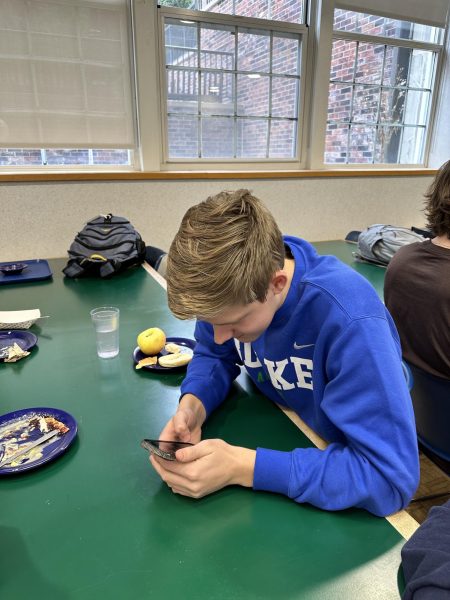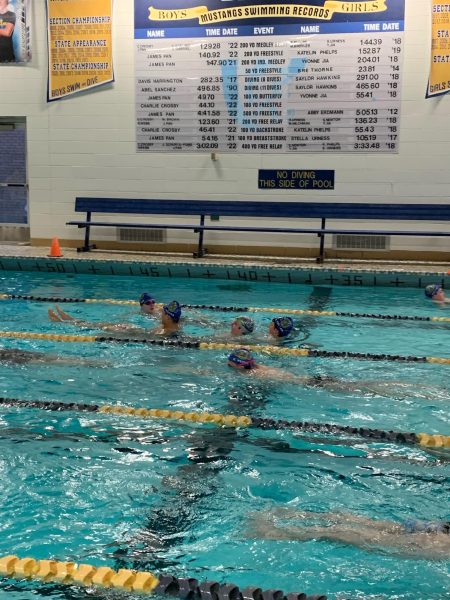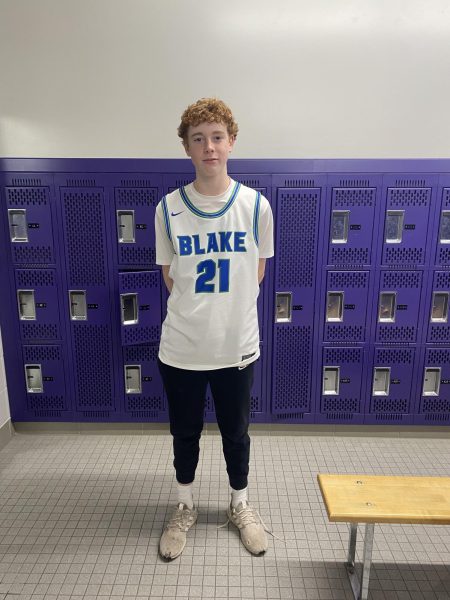Synchronized Swimming Offers Opportunity, Community for Swimmers Across Metro
“One, two, three, four, five, six, seven, eight,” chant the seven members of Blake’s extended synchronized swimming team routine. Amidst the blanket-like humidity and roar of the short team in the water of the John Hartmann Pool, these swimmers learn their routine of nearly four minutes with ease, using practiced teamwork and an almost inherent instinct of what is to come.
With practice six days a week for nearly three hours, these girls know the sport and each other. Now in its fifth year, the Blake Synchronized Swimming team has grown to include three other schools, Benilde St-Margaret’s, Eagle Ridge Academy, and Robbinsdale Armstrong Senior High School, and fourteen girls. As the only synchronized, or synchro team comprised almost entirely of private schools, the Blake team continues to navigate the nuances of a unique multi-school co-op which reflect the unity and trust found in the greater Minnesota high school synchro community.
“You would really think that synchronized swimming would be more of a private school sport, because of the stereotypes that private school kids have money, and synchro is one of the most expensive sports that you can do, and it’s quite interesting that public schools in the state of Minnesota have a monopoly, almost, on synchronized swimming,” explains Josie Lagerstrom ‘18.
A swimmer since her sixth-grade year, Lagerstrom started the Blake synchro team after transferring from Edina Public Schools her freshman year, working with Athletic Director Nick Rathmann to find a coach and enough swimmers.
The news of a new team quickly spread to other private schools around the metro. Benilde-St. Margaret’s Senior and Blake Synchronized Swimming Captain Kara Gerads has been swimming on a club team for the past seven years. Without a team to swim for in high school, Gerads attempted to co-op with the longstanding St. Louis Park Public Schools synchro team. Gerads was unable to do so, due to a concern raised by St. Louis Park about mixing a private and public school team. Then, Gerad’s mother learned about the Blake synchro team, now in its second year.
“She called our athletic director and asked if there was any way that he could do it, thinking that it would be a ‘no,’ but he said, ‘let me contact the athletic director at Blake, and see what he says.’ That same day, my mom emailed me, and said ‘Kara, you’re co-oped with Blake for synchro! Do you want to go to practice tonight?’ And that night, I was in the pool, swimming for Blake,” explains Gerads, “It was like a day-long thing.”
Synchronized Swimming combines flexibility, precision, athleticism and musicality as swimmers perform individually and together in the pool without ever touching the bottom, creating an incredibly demanding sport where success rides on looking effortless. Captain Casey Stocking ‘20 explains that “A lot of people think that synchro is just an artistic sport, that ‘oh it doesn’t count,’ but we actually spend a lot of time speed swimming and doing breath control work and dryland.”
Since 2015, the team has expanded to co-op with two other schools, with ranges of one to three swimmers coming from another school. Driving to Blake and competing for a different school is no small effort for a busy high school student, but “the people who are choosing to co-op with Blake already know what synchro is and are really passionate about it, and that’s why they want to do it in the high school season,” says Gerads.
Simultaneously, the team has been gaining returning swimmers from Blake, many of whom were part of the first season. Together these two groups have allowed the team to have a growing and robust core, as well as many extremely skilled swimmers with club experience. For three-year swimmer Lily Liu ‘22, this variation in skill level and school is beneficial. “I think it’s really nice to have girls from other schools on the team because it feels like we are a big gathering of different schools and it helps make our team more diverse and interesting to swim with,” she explains.
After placing seventh overall at State with only seven girls, tying with the longstanding Edina Public Schools synchro team of 60 plus girls, and placing into a new category, extended, the Blake team is heading and this season with high hopes.
“It would be really cool if we could go to state with our extended team. We started learning it today, it’s really good,” says Gerads.
However, success in the pool comes after long hours of practice and time together. “Synchro is such a mental sport. When you are swimming together in a routine, and the routine is getting really hard, and everyone is out of breath, you have to trust in each other that you are all going to keep trying your hardest, even though you are all exhausted. It’s a really important team bonding experience,” Gerads continues, “You go and into the team not knowing anyone. But, you’re forced to make friends because you don’t know anyone. So, either you’re going to spend the whole season being miserable because you don’t know anyone on the team, or you are going to have to be more outgoing than you normally would be so that you can get to know everyone on your team, and form that trust.”
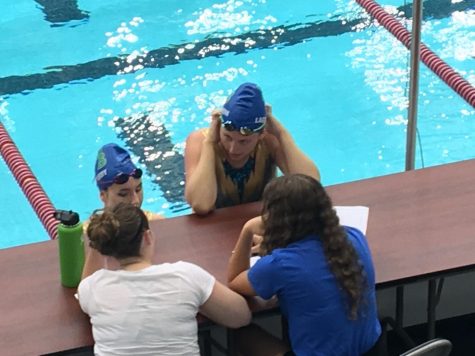
Even after this trust has been formed, the practical challenges of a multi-school team still exist. Co-op girls cannot enter the building alone for practice due to the new policy of key card entry into all Blake buildings, and the lineup of separate Spring Breaks makes practicing early in the season difficult. Socially, Gerads explains, “You talk about certain classes or teachers that you’ve had, and there’s a disconnect, because half of the team knows what you are talking about, and half the team doesn’t. So that’s a problem.”
Nevertheless, for many, these challenges are outweighed by the opportunity to swim. Stocking explains, “each individual small private school would not have the opportunity to have a synchronized swimming team, just because the amount of interest per school is smaller compared to other teams. So, it’s amazing to field a team that gives other girls who wouldn’t otherwise have a team a chance to swim.”
This invaluable chance to swim for a high school team opens access to a unique statewide community of caring girls, parents and coaches, something the Blake team emulates on a miniature scale. “People who do synchronized swimming are some of the kindest people I’ve ever met,” explains Lagerstrom, “You don’t actually have to know any of these people doing synchronized swimming, but we support each other and respect each other, we want other people to do well.”
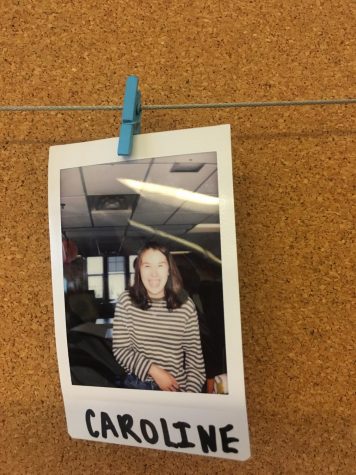
Hi, I'm Caroline! I'm a senior. In the past two years, I've edited Student Life and Features. I'm currently Co-Editor-in-Chief and I edit InDepth. My favorite...

